Table of Contents
Lumbini Tour – Tracing the Footsteps of The Buddha
The resonating sound of gongs and the mesmerizing and sacred chants of Buddhism have always haunted our minds. Our travels across India and other parts of Asia have always featured the presence of the Buddha in some form or the other. Call it our Karma or co-incidence most of our travels have always had some inexplicable connection with the Buddha and Buddhism. Be it our travels to Thailand or our exploration of Ladakh and its monasteries, our visits to Sikkim and Arunachal Pradesh. We had also partially traced the footsteps of the Buddha in India by visiting Bodh Gaya, the place where he attained enlightenment and Sarnath where he delivered his first sermon. What remained was to visit the place of his birth and the place where he attained Nirvana.
The call of the Buddha came and one fine day we found our feet touching the hallowed land where Gautam Buddha was born as we embarked on the Lumbini tour to visit the place which first echoed with the cries of a newborn, a baby destined to show the world the middle path towards salvation. That baby grew up to be the Prince of Kapilavastu, Siddhartha Gautama who at the age of 29 left his home in search of the Truth and came to be known as Gautama Buddha.
Lumbini Tour And The Importance of Lumbini
What is the importance of Lumbini? The question itself assumes a tone of blasphemy when you consider that Lumbini is the place that has changed the course of the history of the world. As you enter the precincts of the place on your Lumbini tour, all questions die a natural death and one is left with just the joy of understanding.
It was here in Lumbini in the 5th century BC that a son was born to the royal couple, Queen Mayadevi and King Shuddhodhana. The event was viewed as a supernatural occurrence that would change the face of the world. The circumstances and events surrounding the birth of the Buddha is very well described in the book, “Introduction To Buddhism, by Venerable Geshe Kelsang Gyatso Rinpoche. At the time of the birth of the royal Prince, astrologers predicted that “he would become a Buddha, and that his beneficial influence would pervade a thousand million worlds like the rays of the sun”.
The Birth Of Buddha Shakyamuni – Lumbini History, Myths And Legends
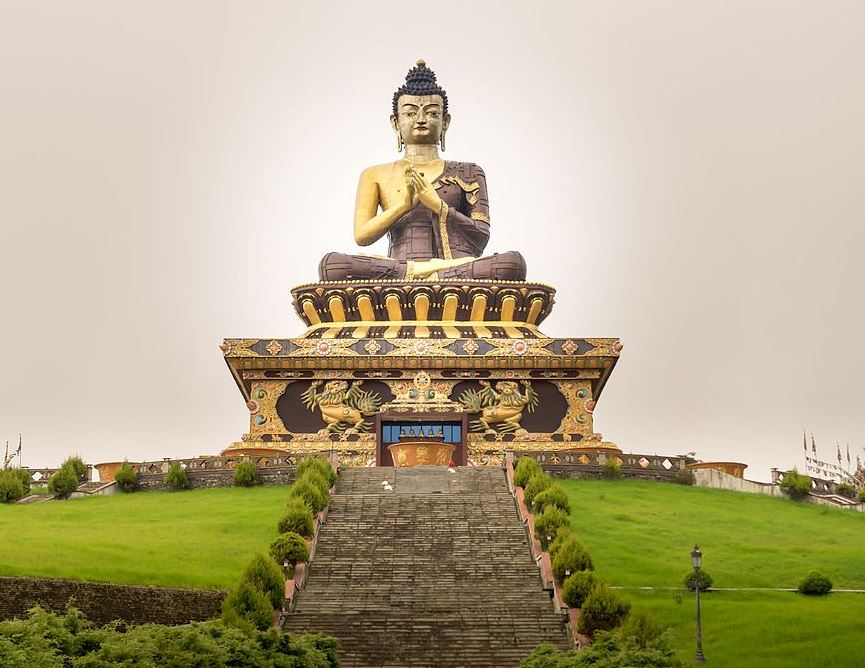
Buddha is also referred to as Shakyamuni. He was born into the royal “Shakya” family and hence the name. Many fascinating myths and legends surround the birth of the Buddha. It is said that Queen Mayadevi had a dream in which a white elephant descended from the heavens and entered her womb, this signified the birth of a pure being who would impact the world as an Avatar of God. It is also said that when the Buddha was born she did not experience the pain that normally women do during childbirth. She gave birth to the Buddha in a standing position holding on to the branch of a tree while having a divine vision.
The new-born child was taken out from her side by the hands of none other than the Hindu God of creation Brahma and Indra the king of Gods. This incident has been immortalized in the shape of what is known as the Nativity Sculpture that can be seen inside the Mayadevi temple in Lumbini and which is the highlight of your Lumbini tour.
The birth of Buddha is said to have taken place in the midst of beautiful gardens, which were then known as Lumbinivana, Lumbini Park, or Lumbini Garden. Queen Mayadevi was on her way from Kapilavastu to her maternal home in Devadaha. She had stopped midway near the banks of an ethereal pond as she was enamored with the natural beauty of the place. This place is today known as the Sacred Garden and has a temple called Mayadevi Temple built to commemorate the epoch-making event of the birth of the Buddha.
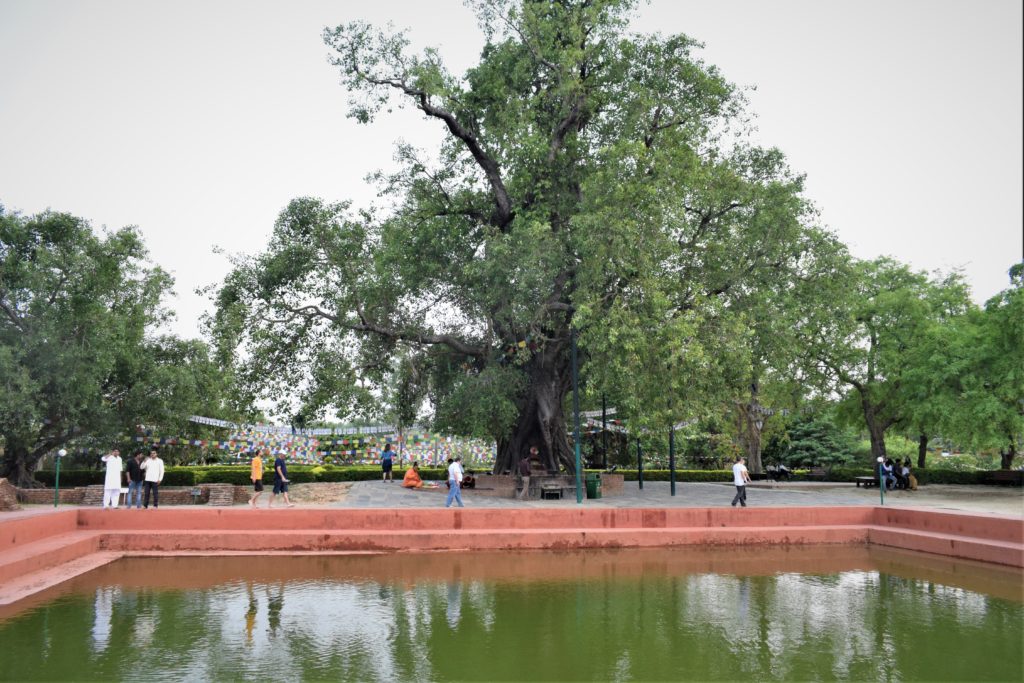
It is believed that Mayadevi bathed in the pond before the Buddha was born and also the baby Buddha was bathed in the same pond. Some myths also tell of the Gods ushering in rain to bathe the newborn baby. There exists a pond known as Pushkarni pond just near the Mayadevi temple Lumbini today. It is believed that the Buddha walked seven steps as soon as he was born and lotus flowers bloomed as he took his first baby steps, which turned out to be a giant leap for mankind.
It is also believed that the Buddha’s mother Mayadevi passed away after seven days of his birth. He was brought up by his foster mother named Pajapati Gotami who was the sister of Mayadevi.
Did you know that according to Theravada Buddhism, there are 1,000 Buddhas born in every Kalpa which is a measurement of time which equals about 4.32 billion years? Gautam Buddha is said to be the 28th of the named Buddhas while the world awaits the 29th named Buddha who is referred to as Maitreya
Daunne – The Place Where Mayadevi Meditated
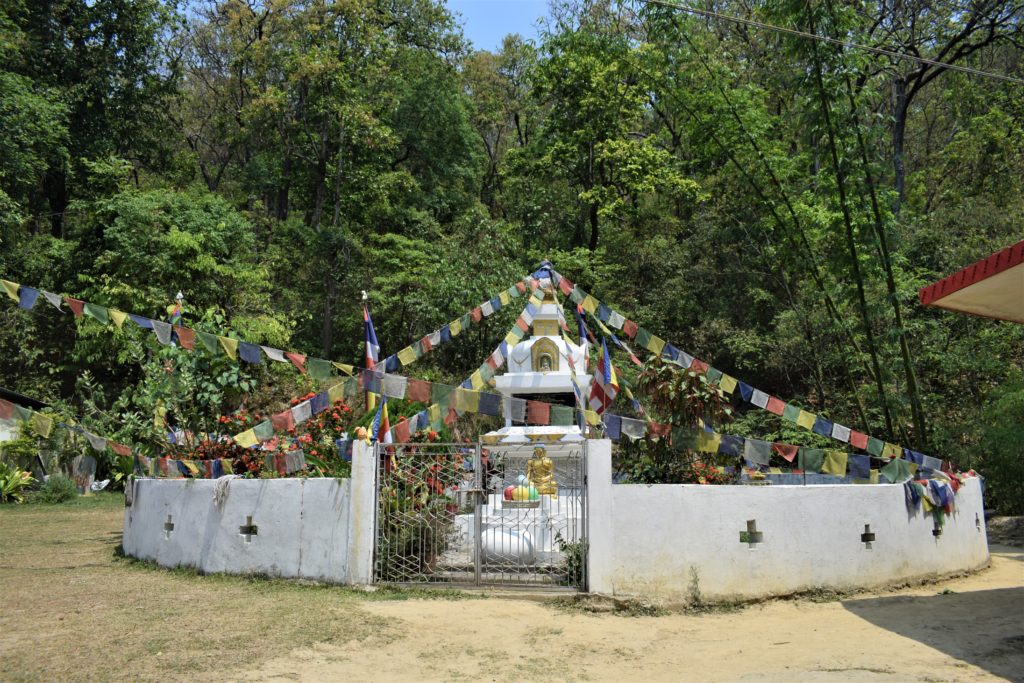
On our Nepal odyssey, we traveled from Kathmandu to Chitwan National Park, and from there to Lumbini, one of the holiest places in Buddhism where the birthplace of the Buddha is located.
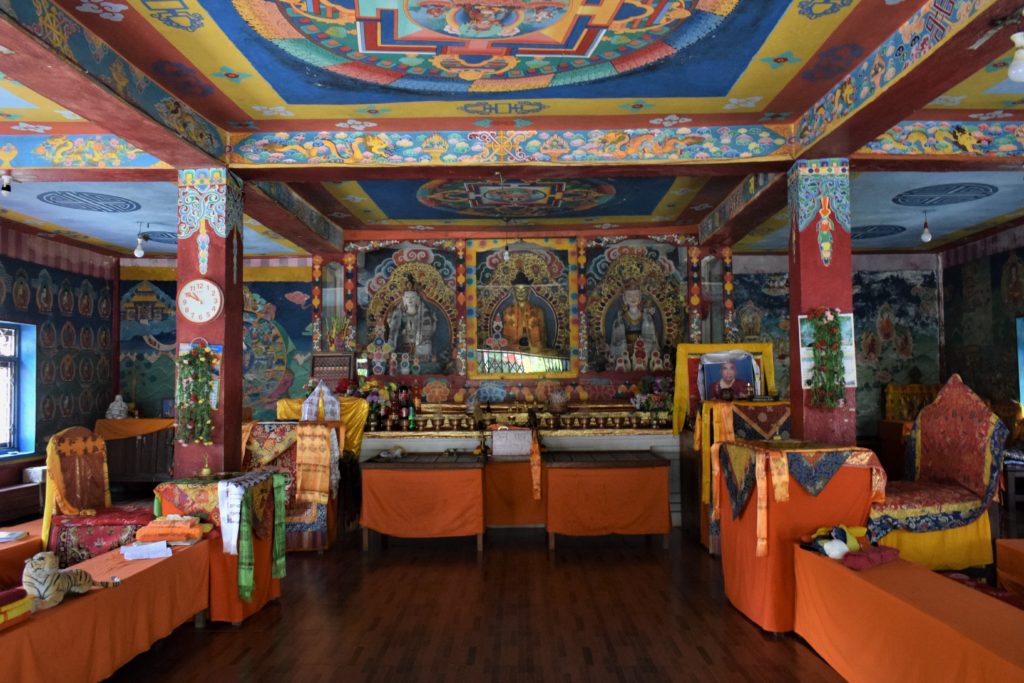
We halted midway for a break and climbed up a steep flight of steps to reach a hill which had a serene Buddhist Monastery as well as a Hindu temple dedicated to Daunne Devi.
Prayer flags fluttered in the wind. There was a strange and almost divine calm that pervaded the place. A young Bhikkhuni informed us that the Queen Mayadevi who had not borne any children even after 20 years of marriage, used to come to this very hill to meditate and pray for offspring.
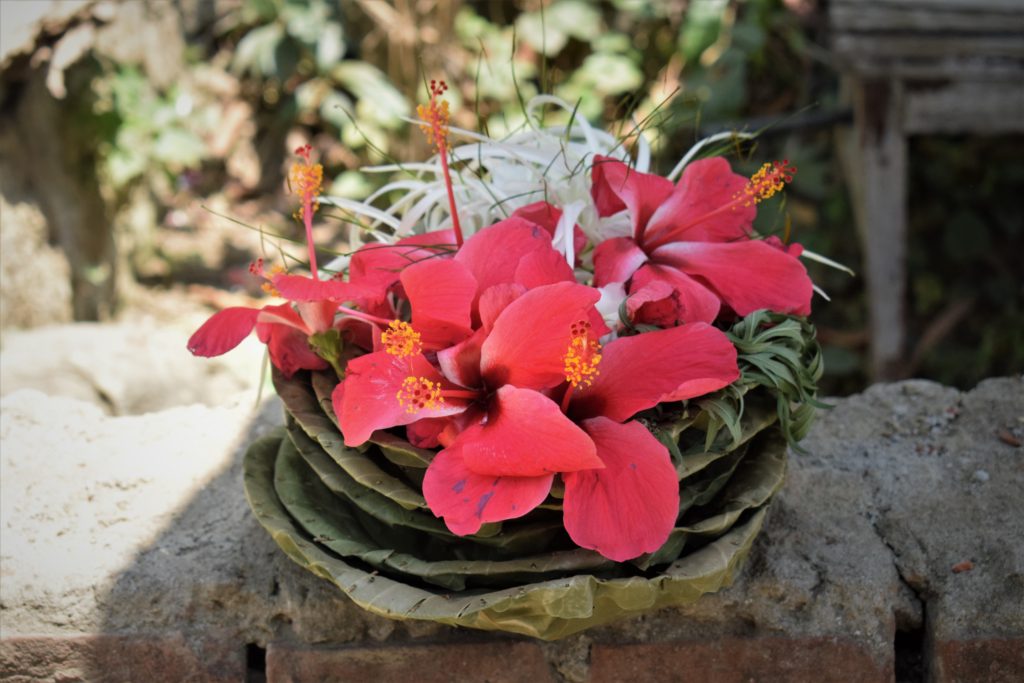
We were really awed that even before we reached Lumbini and started the Lumbini tour we were blessed to visit a site where the mother of Buddha used for meditation.
Experiencing Calm During Our Lumbini Tour
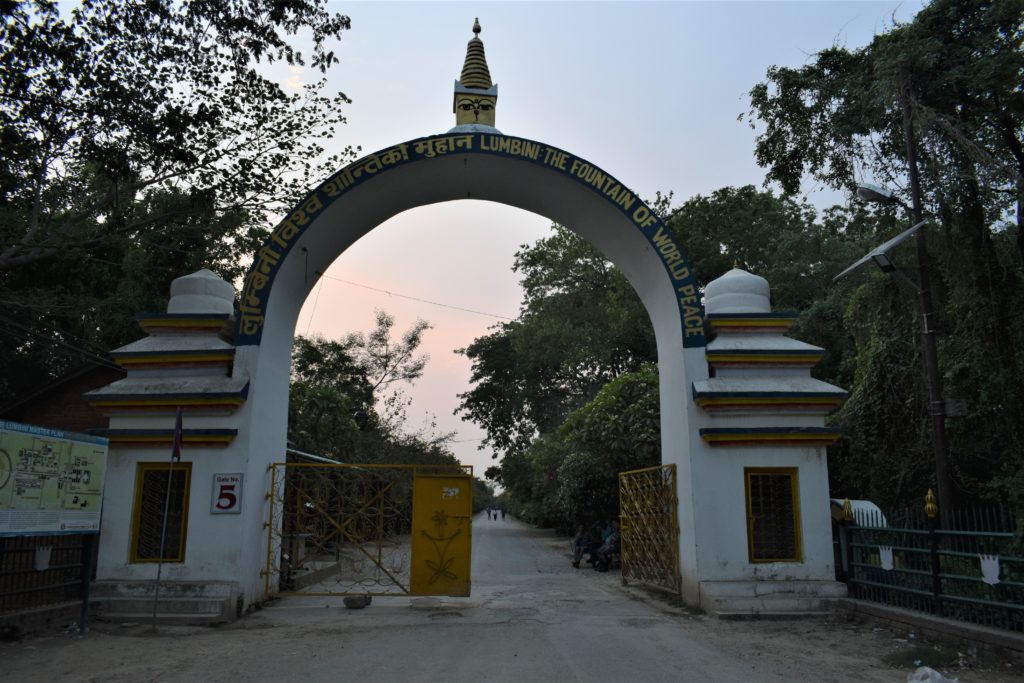
“We will visit the main sites as we do not have much time”, declared our guide. It was a hot and humid afternoon when we entered the premises of the Lumbini UNESCO World Heritage site complex to begin our Lumbini tour.
The heritage sites of Buddha in Lumbini are spread over an area that encompasses 1X3 square miles. The place was inscribed as a UNESCO World Heritage Site in the year 1997. Since then UNESCO along with the Government of Nepal is working on developing the entire premises into a world-class site for pilgrims and visitors.
The massive campus of Lumbini consists of three primary zones. The first zone is the Sacred Garden, the second is the Monastic Zone, while the third is called the Lumbini New Village Zone.
The Lumbini complex is huge and one needs to do a lot of walking or use a bicycle or hire an electric rickshaw to get around. To cover the entire place in a slow manner a day or two is required. As we had less than half a day we could cover only the most important places of attraction in Lumbini.
Visiting The Sacred Garden During the Lumbini Tour
This is the most important of all the sites in Lumbini and definitely pivotal to your Lumbini tour. It is indeed the font from where sprang Buddhism as it was here that Gautam Buddha was born. Signboards along neatly laid roads in the midst of enchantingly landscaped gardens direct you to what is known as the Mayadevi Temple. Soft Buddhist chants play through invisible speakers and lull your mind into a state of calm serenity. The vast open and green space help in further enhancing the tranquil state of mind.
It is worth noting that though Lumbini is one of the most sacred sites of Buddhism, the center of attraction and veneration is the Mayadevi temple, a temple that is dedicated to the mother of the Buddha.
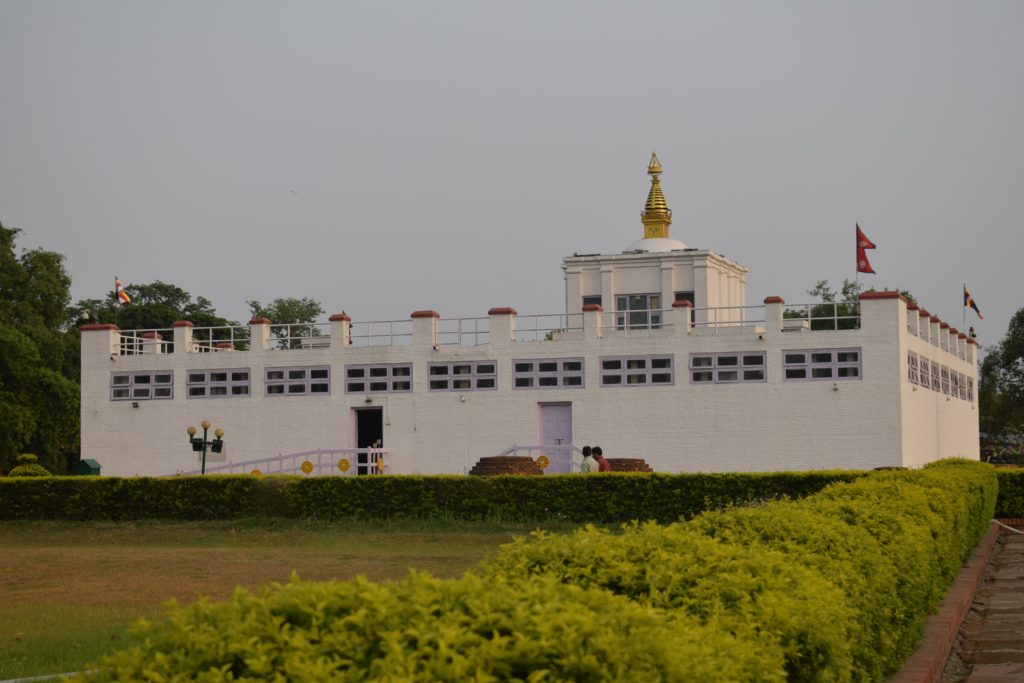
The structure of Mayadevi temple catches your eye with its neat, symmetrical and rectangular shape. It is sparkling white and from the center emerges a stupa with the presence of the omnipotent pair of eyes on four sides. There is a respectful hush of silence as you enter the Mayadevi temple. There is a wooden platform inside that runs around the rectangular room. In the center stands what is known as the Nativity Sculpture.
The sculpture which is now worn out with the passage of time and also millions of hands touching and rubbing it in veneration depicts the scene of the birth of the Buddha. Queen Mayadevi is shown clutching the branch of a Sal tree with her right hand while the left rests on her waist. Pajapati Gotami is seen holding her waist from the right side. Lord Brahma is shown catching the baby most likely on a cloth, though this is not clearly visible. In the background is the figure of Lord Indra watching the proceedings. In the center of the panel of the Nativity, Sculpture can be seen the figure of the boy Prince Siddhartha standing on a lotus with a halo around his head. The dating of the Nativity Sculpture has divided opinions among historians however it is generally agreed that its origin must have been around the second or third century AD.
Below the Nativity Sculpture at an underground level can be seen the Marker Stone that marks the exact place where Maya Devi Gave Birth To Buddha. Around these can be seen the ruins of various structures. The enclosed temple preserves the ancient relics with much care and everything is covered in glass. As you walk on the wooden platform the thought that this is the very place that the little Prince Siddhartha who was destined to be the Buddha first set his tiny feet on sends strange currents of excitement through your spine.
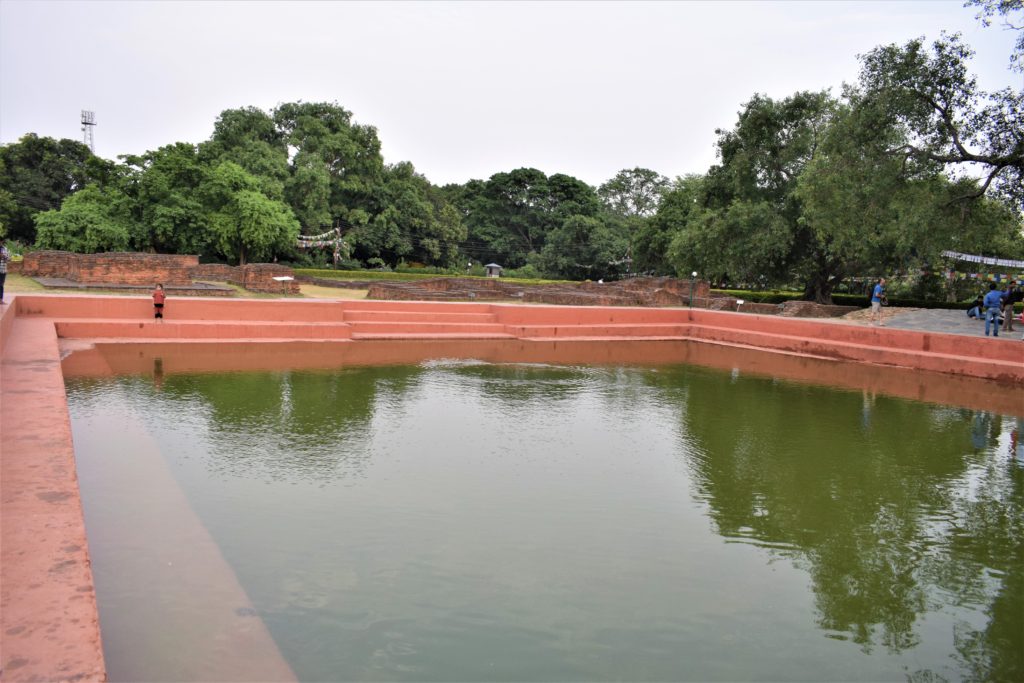
As you step outside the Mayadevi Temple, a pond filled with emerald water further accentuates the serenity that your mind has just experienced. The pond is called Pushkarni and stands at the place where Queen Mayadevi gave the Buddha his first bath. Some kids run around the pond and play on semi-circular brick structures that are the remains of ancient Stupas and remains of a monastery. The innocent kids are unaware of the immense significance of the place they are in.
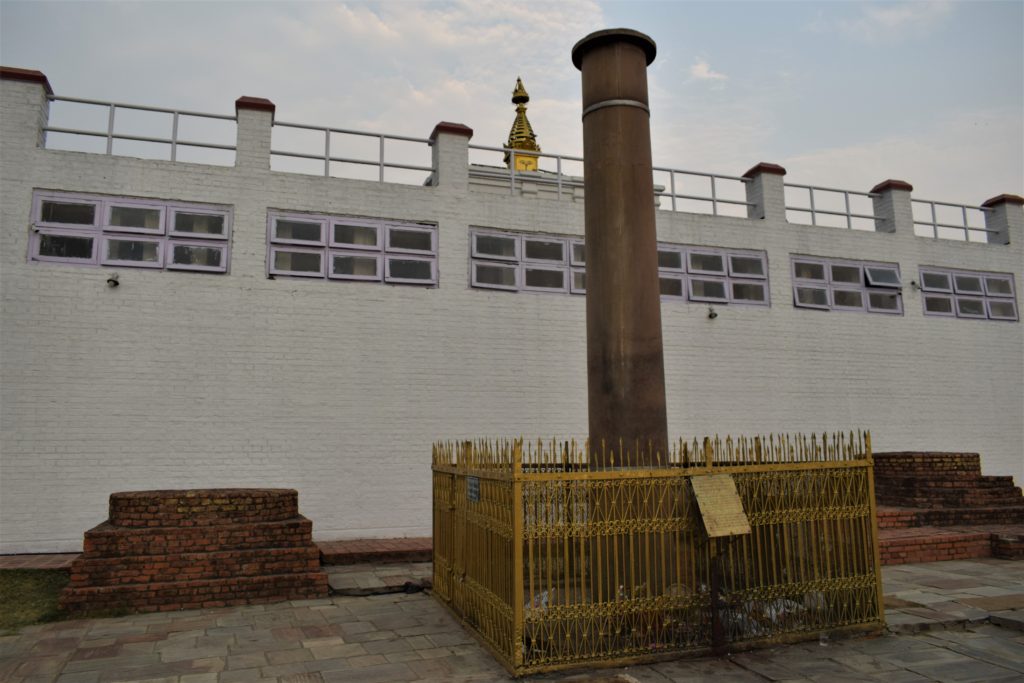
As we move away from the Pushkarni we come across an impressive looking pillar made of red sandstone. The pillar has some faded inscriptions which we learn are in Pali language and in the Brahmi script.
A board nearby carries the English and Nepalese translation of this inscription. The English version reads as under:
“King Piyadasi (Asoka) the beloved of the Gods, in the twentieth year of his reign, himself made a royal visit.
Sakyamuni Buddha was born here, therefore the (birth spot) marker stone was worshipped and a stone pillar was erected.
The Lord having been born here, the tax of the Lumbini village reduced to the eighth part(only).
The importance and significance of this majestic looking pillar are underlined by this board. This is one of the famed Ashoka pillars. This Ashoka pillar is of special importance as it has helped in identifying the birthplace of the Buddha.
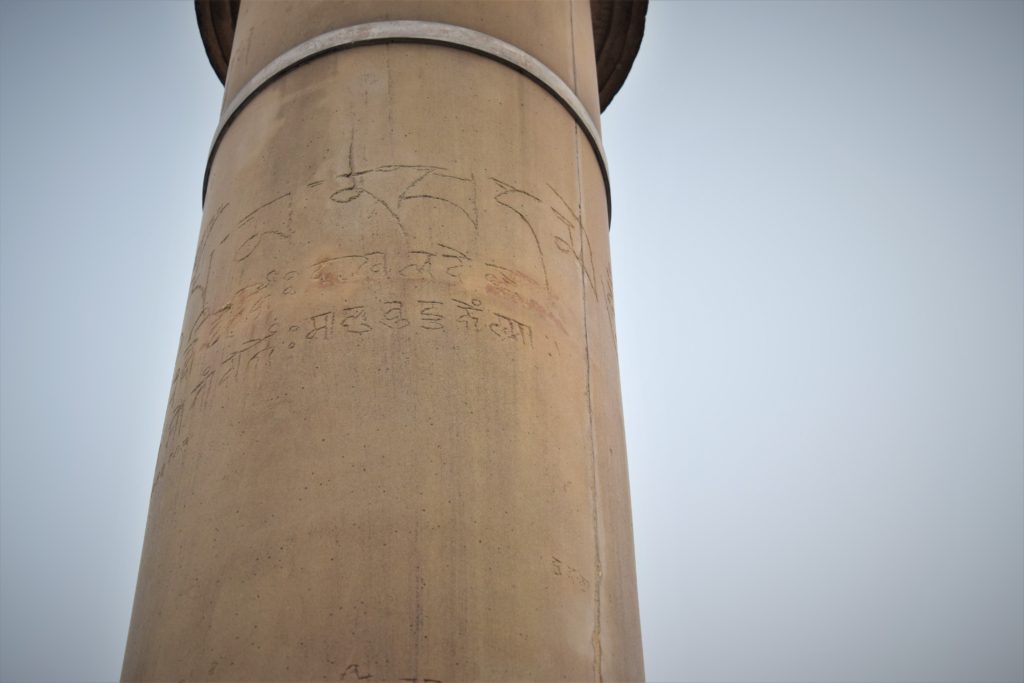
The pillar itself was lost to the world until it was re-discovered in 1896 by a German archaeologist named Feuhrer. It is generally agreed by historians that Ashoka had the pillar erected to commemorate his own visit to the place where the Buddha was born around the year 249 BC.
Another noteworthy point about the Asoka Pillar in Lumbini is the fact that originally it was a 40 feet tall pillar with a lotus bracket, as well as a crowning figure which archaeologists speculate, was that of a horse. What remains now is just the monolithic pillar which measures a little under 31 feet. A later inscription on the upper portion of the pillar has been engraved to commemorate the visit of the King Ripu Malla in 1312 AD. This inscription has the words, “Om Mani Padme Hum Ripu Malla Chiran Jayatu”.
Ancient Chinese travelers like Hieun Tsang and Fa Hien too mention the erection of the Ashoka Pillar at Lumbini in their accounts that date back 636 AD and 5th century BC respectively.
As we stood staring at the Ashoka Pillar Lumbini and its fading inscriptions, images of the dramatic life of Ashoka himself flashed through our minds. Images of the bloody war of Kalinga, an emperors remorse and transformation, and finally that of an emperor who was an embodiment of peace and love.
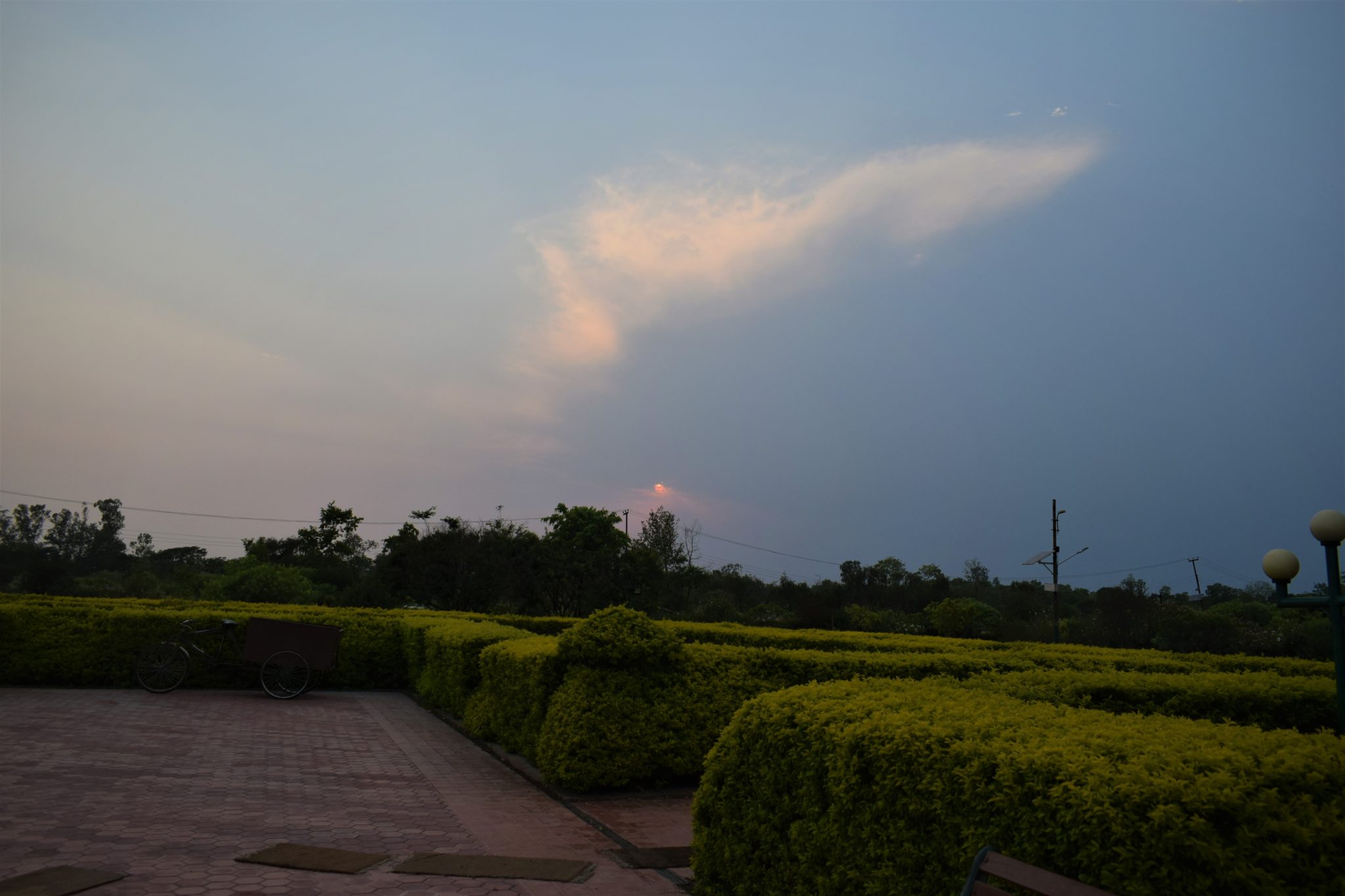
As the sun set on the western horizon and birds flew to their homes in the wake of a medley of sounds, we left the hallowed precincts of the Mayadevi temple. A place that was synonymous with divinity for the Buddhists.
The Monastic Zones
The Lumbini Mandir and the sacred garden are of course the core and heart of the Lumbini tour. But also important is the monastic zone. This is the area where you have monasteries from different parts of the world. The Western Zone is for the Mahayana and Vajrayana branch of Buddhism while the Eastern Zone is for the Theravada branch of Buddhism. A long water canal flows between the two zones clearly demarcating them. The Western Zone has 29 plots for monasteries while the Eastern zone has 13.
The Eastern Zone has monasteries that include the Cambodian temple, The Myanmar Golden temple, the Royal Thai Monastery, Sri Lankan Monastery, among others.
The Western Zone has monasteries that include monasteries from China, Vietnam, Japan, and other countries.
The New Lumbini Village
This part of the Lumbini precincts is devoted to different facilities for visitors and pilgrims alike. It consists of accommodation and hotels, visitor information center, an administrative center, Lumbini Museum, and a research center.
The World Peace Pagoda
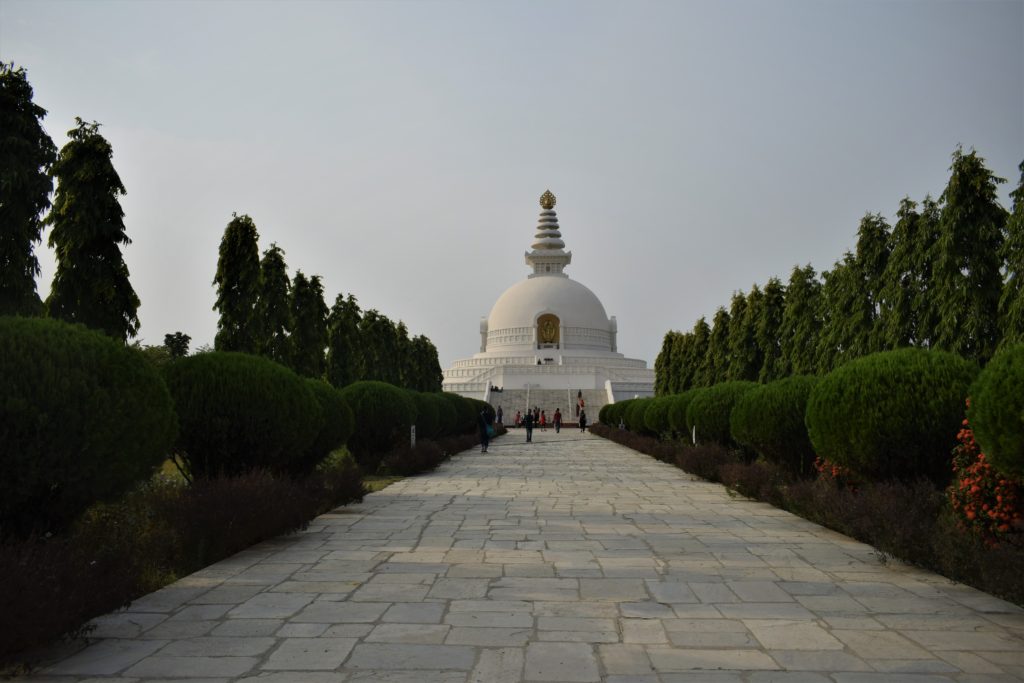
It stands like a shining white pearl. Imposing in its majesty. Serene in its symmetry. It stands in the middle of a beautiful garden and is flanked by a pond where lotuses bloom. The Peace Pagoda that stands as a glowing message of love and peace to humanity has been built by the Nipponzan Myohoji Buddhist Order. This peace pagoda or stupa is one among many built across the world by the Nipponzan Myohoji Buddhist Order. The monks of this order work for the propagation of world peace.
The order was founded by the Buddhist monk Nichidatsu Fujii. Shaken and moved by the horrors of the Nuclear war that saw atom bombs being dropped in Nagasaki and Hiroshima, the monk initiated the erection of peace pagodas across the world and canvassed for world peace through his order. It is interesting to note that he met Mahatma Gandhi in India in 1933. The order has also built a World Peace Pagoda at Rajgir in Bihar in India as well as Dhaulagiri near Bhubaneshwar in the Indian state of Odisha.
The World Peace Pagoda is one of the must-visit places during your Lumbini tour. The visit actually sets the tone for the remaining tour.
Important Places to Visit in Lumbini
♠ Sacred Garden
♠ Mayadevi Temple
♠ Nativity Sculpture
♠ Marker Stone
♠ Ashoka Pillar
♠ The Sacred Pond Pushkarini
♠ Ruins of Stupas and Viharas
♠ Statue of Standing Baby Buddha
♠ World Peace Pagoda
♠ Lumbini Crane Sanctuary
♠ Eternal Peace Lamp
♠ Peace Bell
♠ The Central Canal
♠ Monasteries in the East and West Monastic Zones
Important Places to Visit in Lumbini And The Vicinity on The Buddhist Circuit
Yes, the Lumbini pilgrimage seems to be the epicenter of the Buddhist reverence and interest. However, there are many places to visit in Lumbini and the vicinity that are inextricably linked with the life of Buddha and Buddhism scattered in the vicinity. These places are of enormous historical interest and value and should be part of an extended Lumbini tour if time permits.
Kapilavastu Nepal
Significance: This is the ancient capital of the Shakya kingdom and their seat of power. Kapilavastu was the home of King Shudhodhana and Queen Mayadevi and this is where the young prince Siddharth spent 29 years of his life after his birth in Lumbini.
Distance from Lumbini: About 62 kilometers.
Devadaha
Significance: The ancient city of Devadaha was the capital of the Koliya kingdom and the maternal home of Buddha’s mother. It is believed that the young Prince Siddhartha who was bought up by Pajapati Gotami spent some years of his early life in Devadaha.
Distance from Lumbini: About 53 kilometers.
Daunne Hill
Significance: It is believed that Mayadevi, mother of Buddha used to meditate on this hill before the birth of the Buddha.
Distance from Lumbini: About 65 kilometers.
Kudan
Significance: This is the place where an enlightened Buddha met his father, stepmother, wife, and son for the first time after attaining enlightenment.
Distance from Lumbini: About 30 kilometers.
Gotihawa
Significance: This is the birthplace of Krakuchhanda Buddha also sometimes referred to as Kakusandha Buddha. He is the 25th of the 29 named Buddhas. Gautama Buddha was the 28th while the 29th is the future Buddha known as Maitreya Buddha.
Distance from Lumbini: About 33 kilometers.
Ramagrama
Significance: The only unexposed Stupa containing the holy relics of the Buddha is located in Ramagrama.
Distance from Lumbini: About 52 kilometers.
Niglihawa
Significance: This is the birthplace of Koṇāgamana Buddha also sometimes referred to as Kanakamuni. He is the 26th of the 29 named Buddhas. Gautama Buddha was the 28th while the 29th is the future Buddha known as Maitreya Buddha.
Distance from Lumbini: About 40 kilometers.
Important Places And Events in The Life of The Buddha
There is no proper consensus on the date of birth and subsequent events in the life of the Buddha though it is generally agreed that he was born during the 6th century BC.
♠ The birth of Buddha at Lumbini, historians are not agreed about the year of birth but date his lifetime between 563 BC to around 483 BC
♠ The young Prince Siddhartha marries Yashodhara
♠ The young Prince sees the miseries of the world
♠ The prince takes the path of renunciation and leaves the palace
♠ Prince Siddhartha attains enlightenment under a Bodhi Tree in Bodh Gaya and becomes the Buddha
♠ Gautama Buddha delivers his first sermon in Sarnath near Varanasi in 528 BC
♠ The Buddha pays a brief visit to Kapilavastu after enlightenment and meets his father, Step Mother, wife, and son at Kudan
♠ Buddha spends several months in Rajgir or Rajagriha in India and initiates the King Bimbisara to Buddhism
♠ Buddha gave his last sermon at Vaishali in India before he headed to Kushinara, Buddha also met Amrapali or Ambapali in Vaishali
♠ Buddha attains Paranirvana at Kushinara or Kushinagar in present-day Bihar in India
Best Time to Visit Lumbini
Lumbini weather can be unbearably hot in the summers. We were there in early June and it was very hot and humid, especially so in the afternoons. Visiting Lumbini involves a lot of walking or cycling and hence summers are not the best time to head there. The best time to visit Lumbini would be during the months of October and November when the weather is cool.
Tips, Do’s And Don’ts on The Lumbini Tour
♠ Dress modestly at all times when visiting Lumbini and completely avoid revealing clothes
♠ Avoid all forms of PDA
♠ Remove all footwear before entering the temples or monasteries
♠ Follow the instructions displayed and avoid photography wherever prohibited
♠ Respect the traditions and customs and maintenance silence within the premises
♠ Take permission before photographing people
♠ Do not damage the gardens, pluck flowers or disturb the birds or animals in the premises
♠ Do not pick up any objects or walk over the archaeological ruins
♠ Be prepared for lots of walking and ensure that you carry drinking water and are protected from the sun
Lumbini Map
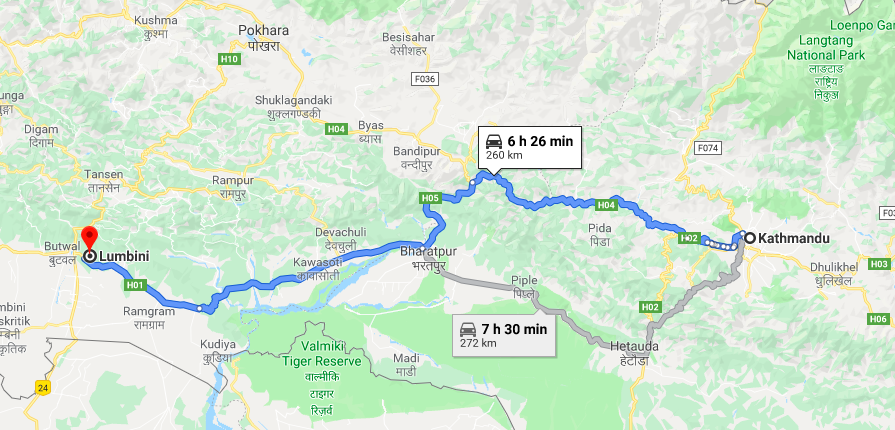
Lumbini Tour And Travel – FAQ
We hope this section answers your questions about the place and stands you in good stead when you visit Lumbini. However, if you do have any specific questions about Lumbini that are not covered here, do connect with us.
🔹 Where is Lumbini?
🔸 Lumbini which is the birthplace of Gautama Buddha is in Nepal. It is located in the Rupandehi district which falls under Province 5 of Nepal.
🔹 What are the main things to do in Lumbini?
🔸 Lumbini is a UNESCO World Heritage Site and has many historical places of significance to Buddhism. The main activities to do in Lumbini include visiting the Mayadevi Temple which marks the spot where Buddha was born, visiting the World Peace Pagoda, and the numerous monasteries build by Buddhist sects from across the world.
🔹 What are the Lumbini Park timings?
🔸 The attractions inside the Lumbini Park are open from dawn to dusk. Some close a little early, but most including the Mayadevi Temple close around 5.30-6.00 in the evening.
🔹 What is the Lumbini Garden Entry Fee?
🔸 The current entry fee to Lumbini Park where the birthplace of Buddha and other historic sites are located is NRS 40 for Indians, NRS 200 for visitors from other SAARC countries and Myanmar, and NRS 500 for visitors from other countries. The entry fee is NRS 20 for Nepalese citizens and free for those hailing from the regions of Rupandehi, Kapilavastu, and West Nawalparasi. A camera fee of NRS 50 is applicable for those from Nepal and India while it is USD 2 for visitors from other countries.
🔹 Is it established that Lumbini is Buddha’s birthplace?
🔸 Though there had been a lot of speculation and different opinions about the actual birthplace of Buddha, the discovery of the Ashoka Pillar and other archaeological evidence has firmly established that Lumbini is the birthplace of Buddha. In 1997 the site has been formally inscribed as a UNESCO World Heritage Site.
🔹 Which place in India is as sacred as Lumbini of Nepal?
🔸 There are many places in India that are sacred pilgrimage centers for the Buddhists. Chief among these are Bodh Gaya, Sarnath, Kushinagar, Vaishali, and Rajgriha.
🔹 Can one travel from Lumbini to Pokhara?
🔸 It is quite convenient to travel from Lumbini to Pokhara. We traveled from Lumbini to Pokhara by road. The distance from Lumbini to Pokhara is about 165 kilometers.
🔹 What is the Lumbini to Kathmandu distance?
🔸 The Lumbini to Kathmandu distance is about 260 kilometers.
How To Get To Lumbini
♦ Lumbini is located in the Rupandehi district of the Province – 5 in Nepal
♦ Kathmandu to Lumbini distance is about 260 kilometers
♦ Pokhara to Lumbini distance is about 165 kilometers
♦ The nearest airport to Lumbini is Bhairahawa which is also referred to as Siddharthanagar located at a distance of about 22 kilometers
♦ If you are thinking of a Kathmandu to Lumbini flight you can fly to Bhairahawa from Kathmandu and drive down to Lumbini
♦ There is a Kathmandu to Lumbini bus and the journey takes about 9-10 hours
♦ Currently, Lumbini International Airport is not there, however, the Gautam Buddha Airport at Siddharthanagar is currently in the process of being upgraded and would become the second International Airport of Nepal after Kathmandu
♦ The distance from Gorakhpur, Uttar Pradesh, India to Lumbini is only about 123 kilometers and can easily be traveled by road
Where To Stay In Lumbini
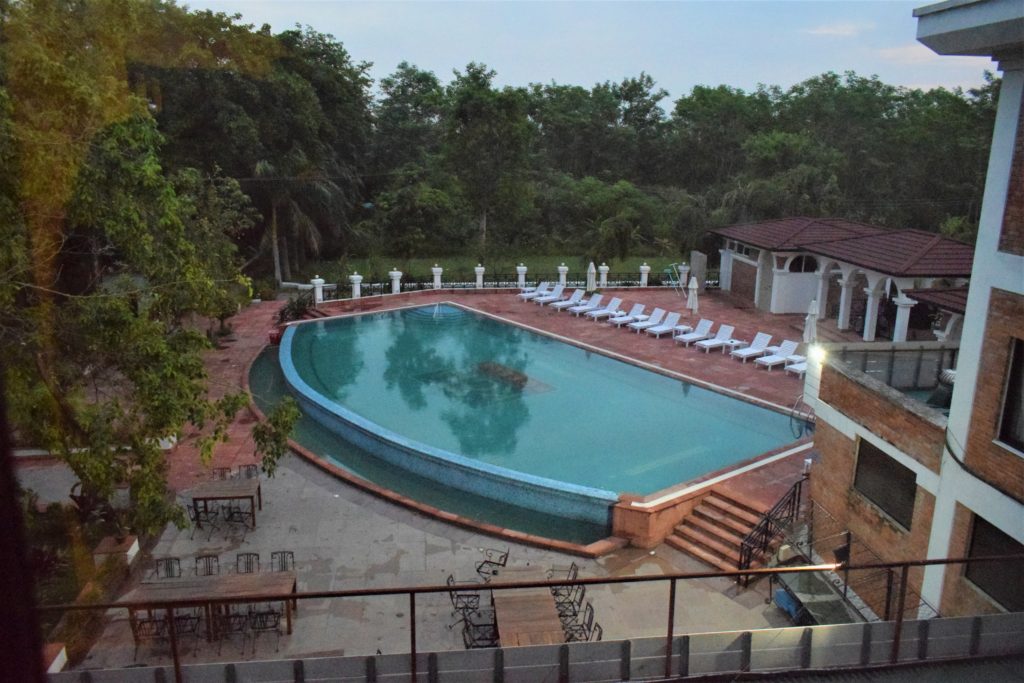
There are a number of options across budget ranges in terms of hotels in Lumbini Nepal. If you are looking at luxury accommodation you can stay at Buddha Maya Gardens Resort as we did. The hotel is located in a tranquil area not far from the main temples and sights of Lumbini. It is one of the best hotels in Lumbini The property is located in the midst of lush greenery and consists of spacious rooms and suites. The hotel is a part of the KGH group which has properties in Kathmandu, Pokhara, Chitwan, and Sarangkot also. We stayed in the hotel for just one night and were satisfied with the amenities and the suite was clean and comfortable.
For those looking for budget accommodation, dormitories are available at the Korean Monastery at very reasonable rates. Many budget hotels are also available in the vicinity of the Lumbini temples.
Thinking about doing a Lumbini tour? You can book flights and hotels right here.
You can plan your stay during your Lumbini tour or any town in Nepal. We stayed at Buddha Maya Gardens Resort in Lumbini. For the best hotels or resorts in Lumbini do check out our favorite sites. You can book your hotels through TripAdvisor or Cleartrip or Booking.com and accrue huge savings.
| Click to book the best hotels/resort |
|---|
You can book a tour to Lumbini from Kathmandu.
We hope that our Lumbini travel blog serves as a Lumbini travel guide and answers all your questions. However, please do connect with us for any queries or clarifications. Tell us what you think about our post through the comments section. Connect with us on our social media channels. We leave you with the five precepts of Buddhism known as the Panch Sila to ponder over.
You might want to read our other posts on Nepal and Buddha:
Chitwan Jungle Safari | All About Chitwan National Park, Nepal
Chitwan Jungle Walk – Losing Yourself In Nature
Travel Tips for Nepal – Things to Know Before Traveling to Nepal
Trekking in Nepal – Best Trekking Places in Nepal
A Paradise called Pokhara beckons you
On the Trail of the Buddha in Bodh Gaya
Ravangla- An Accidental Discovery
Do You Love Traveling?
Do you want to know how to travel the world? We have put together a very useful travel resources page with best travel tips. Go check it out now.
Thanks for visiting our site Voyager – imvoyager.com and taking the time to read this post!
If you wish to collaborate/work with us then reach us at [email protected]
We’d love if you’d comment by sharing your thoughts on this post and share this post on social media and with your friends.
[shareaholic app=”share_buttons” id=”27413782″]
Follow our journey on our social media channels:
Facebook Twitter Instagram Pinterest G+ YouTube
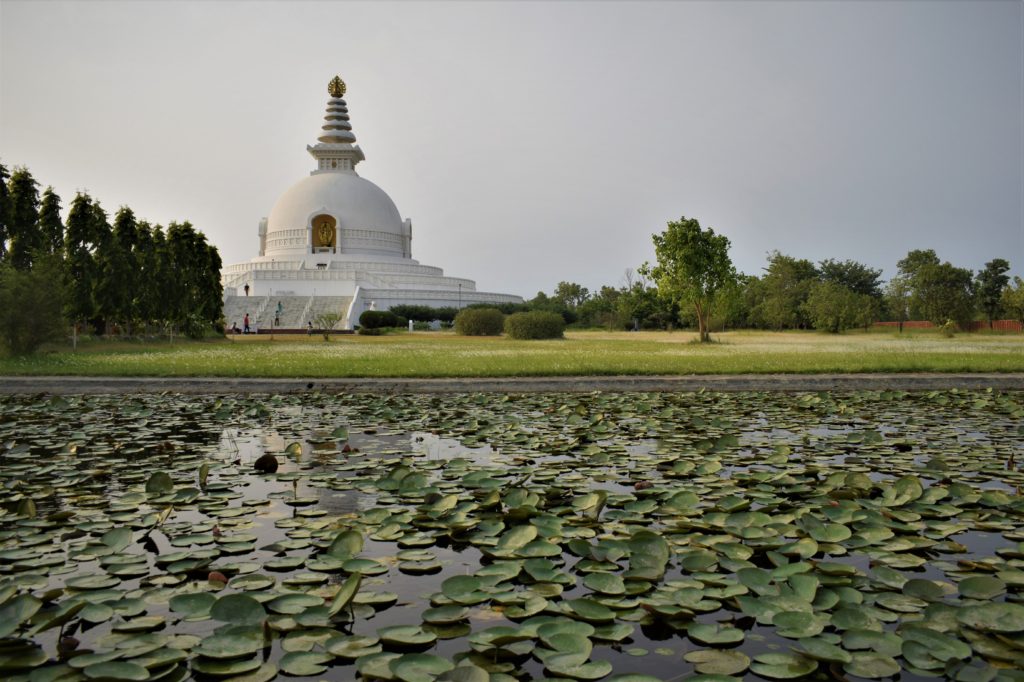
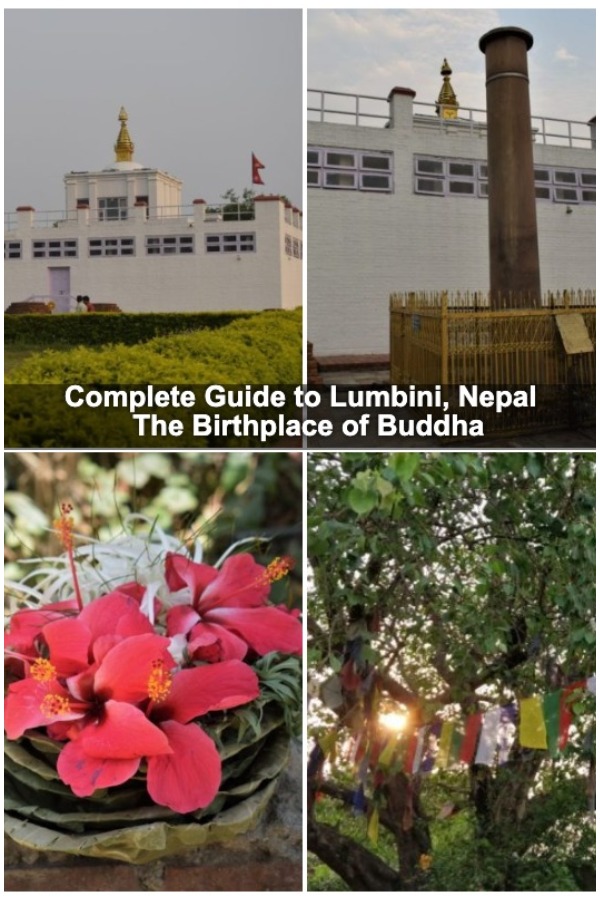
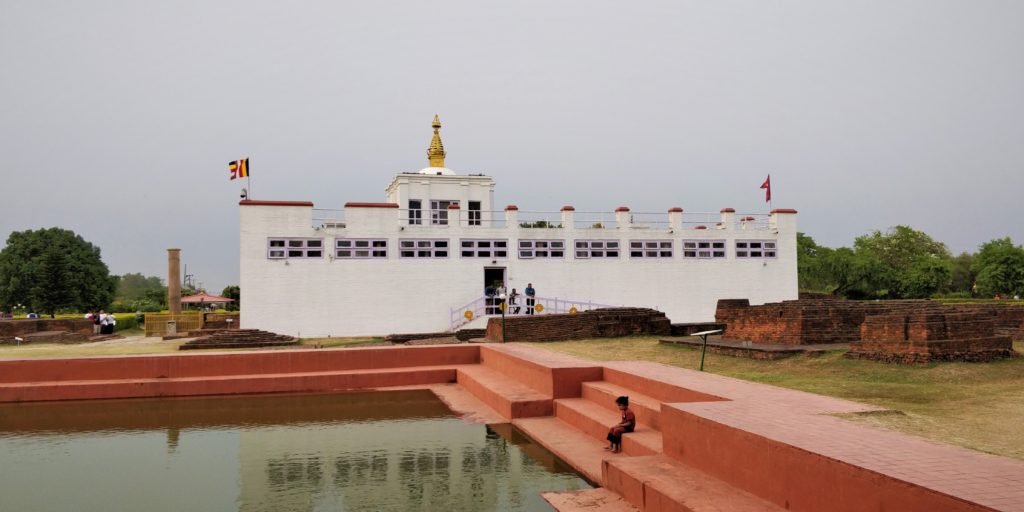
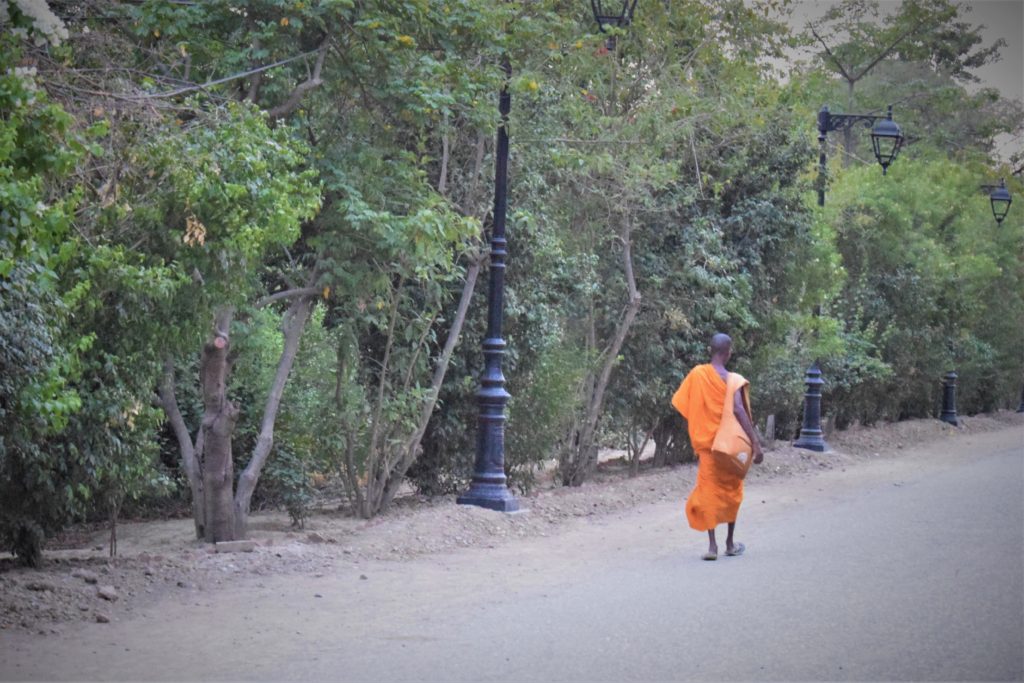
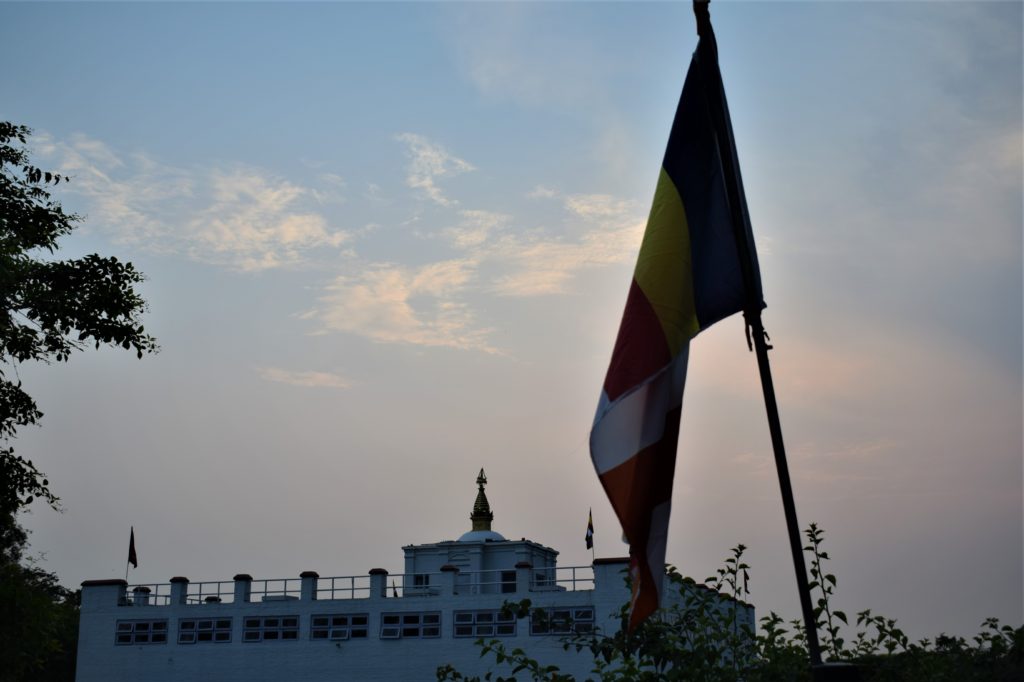
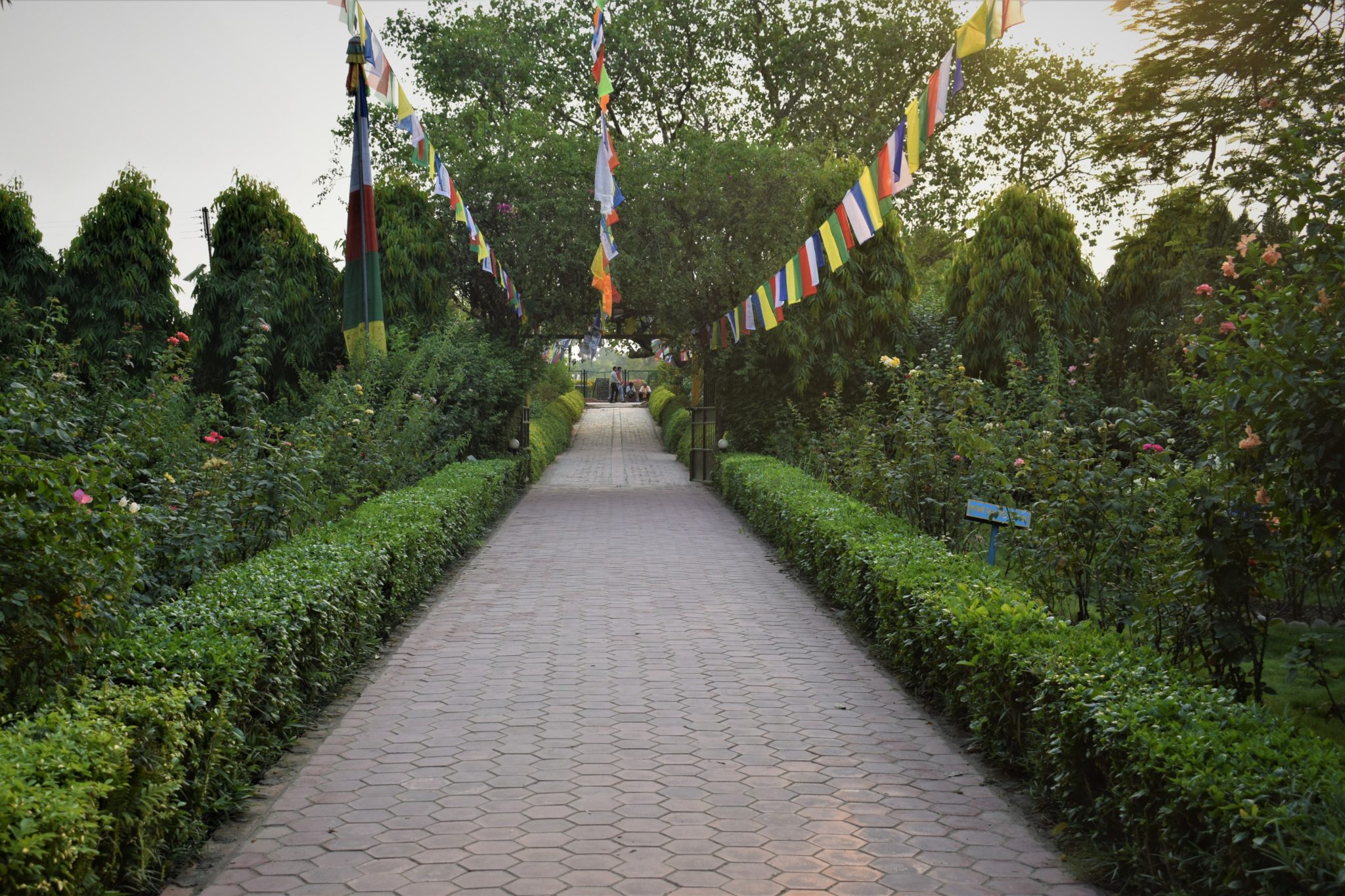
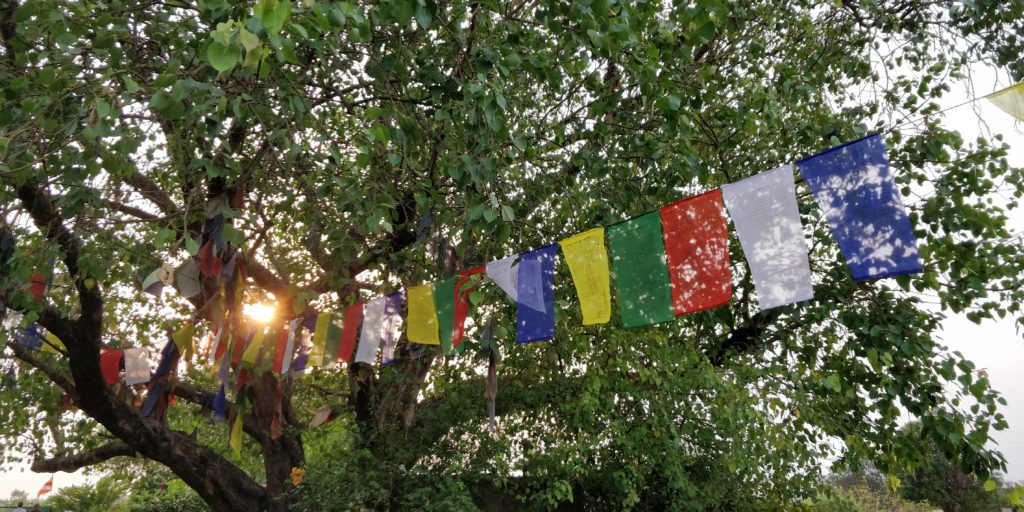
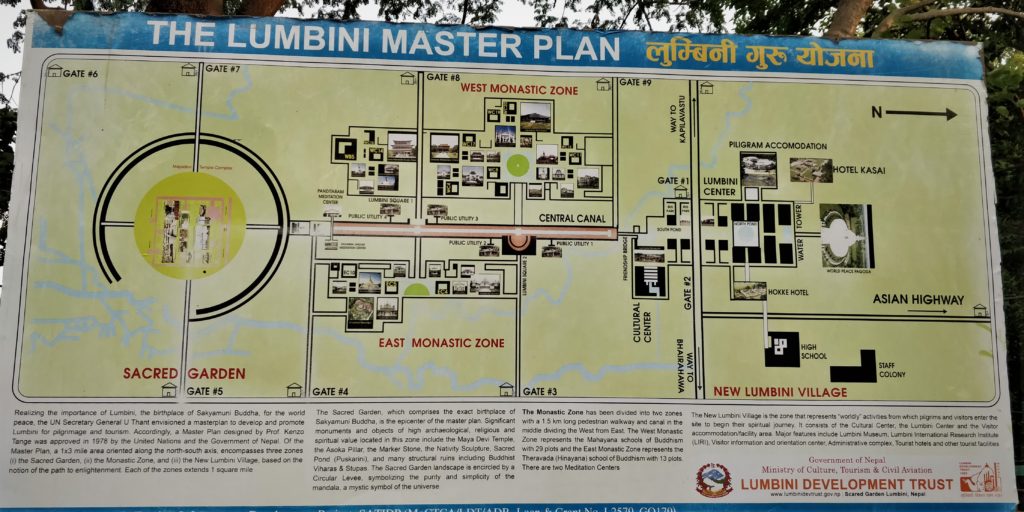
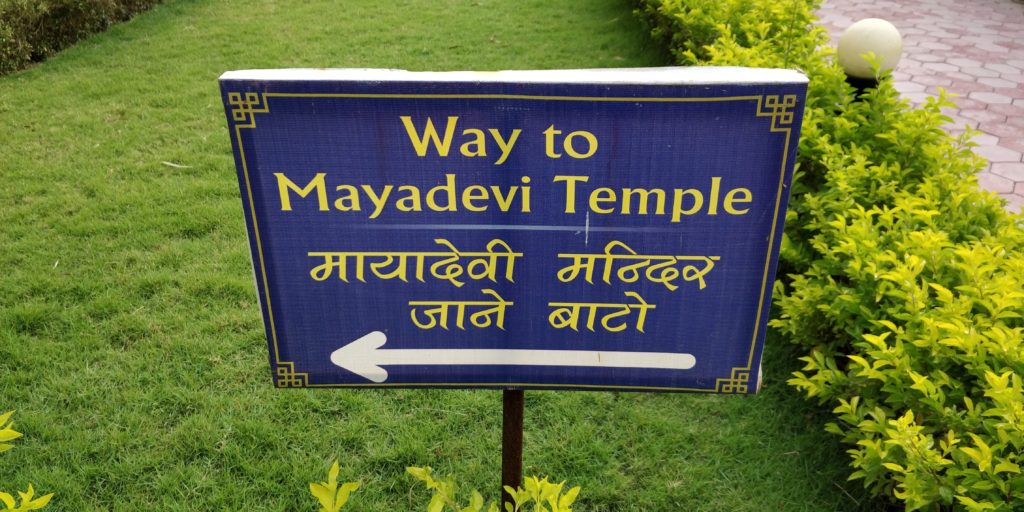
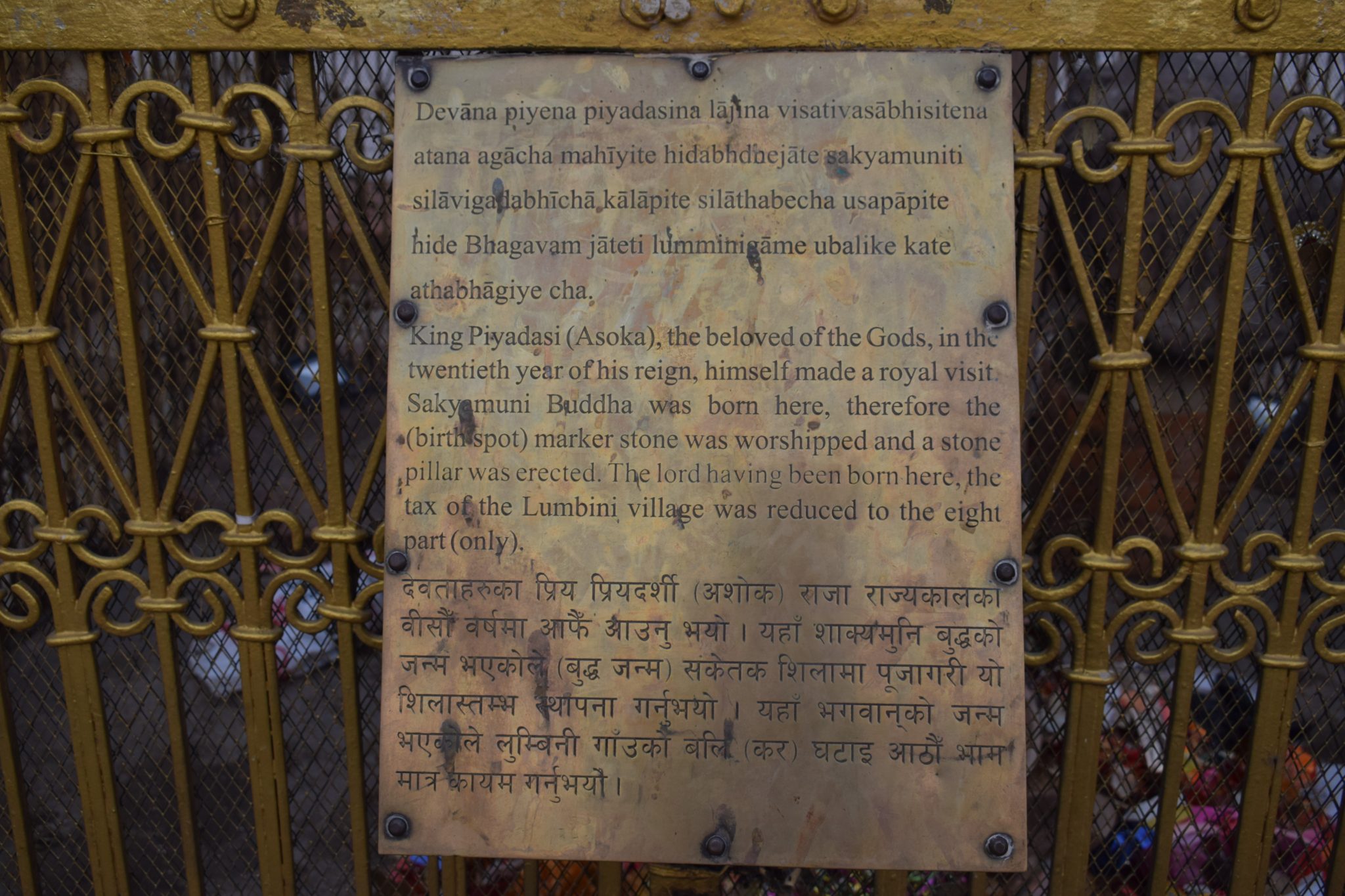
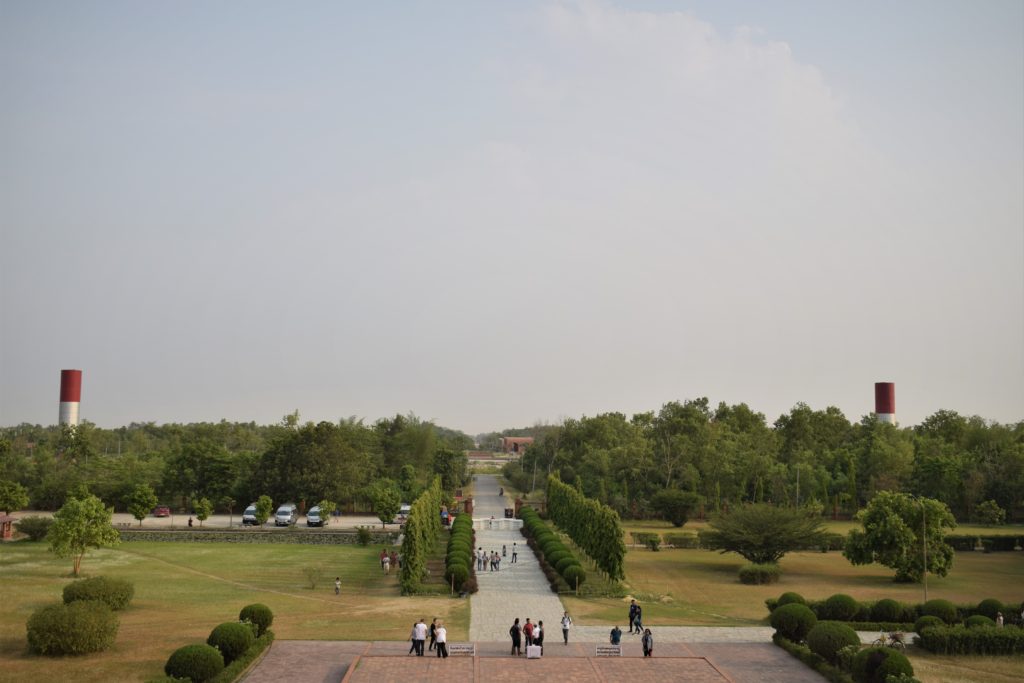
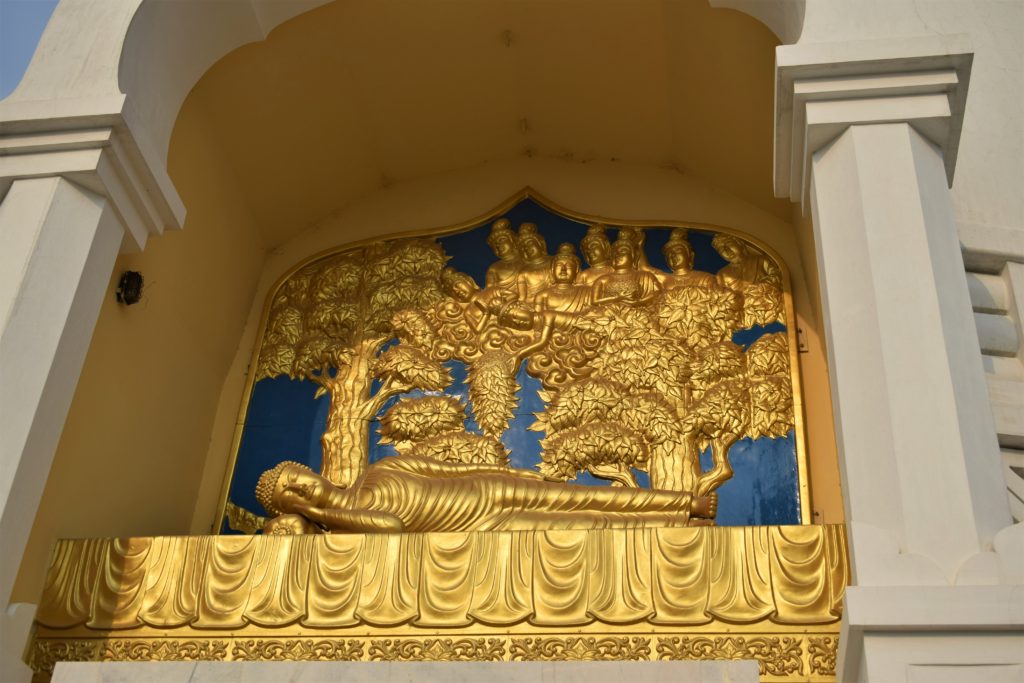
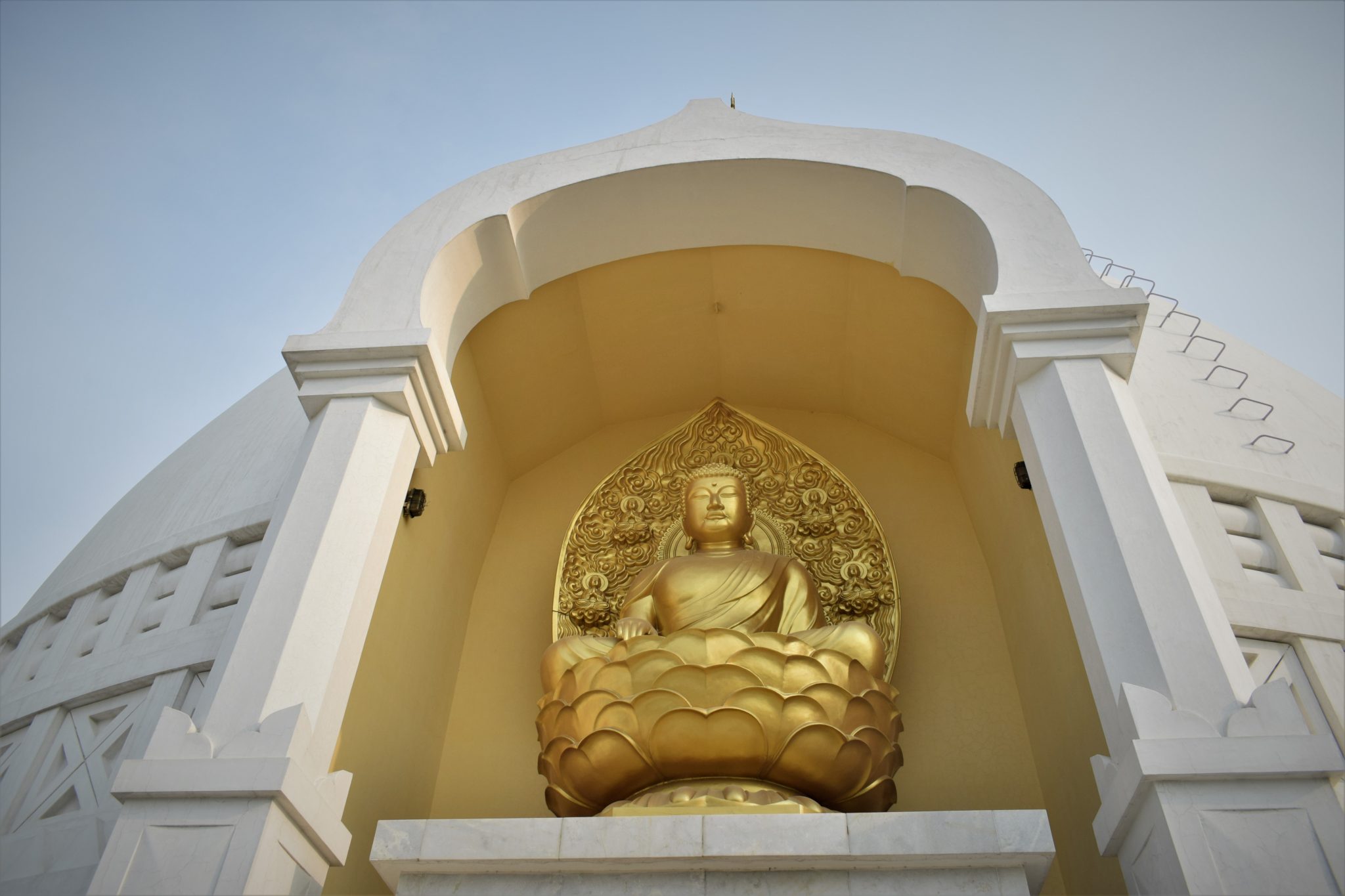
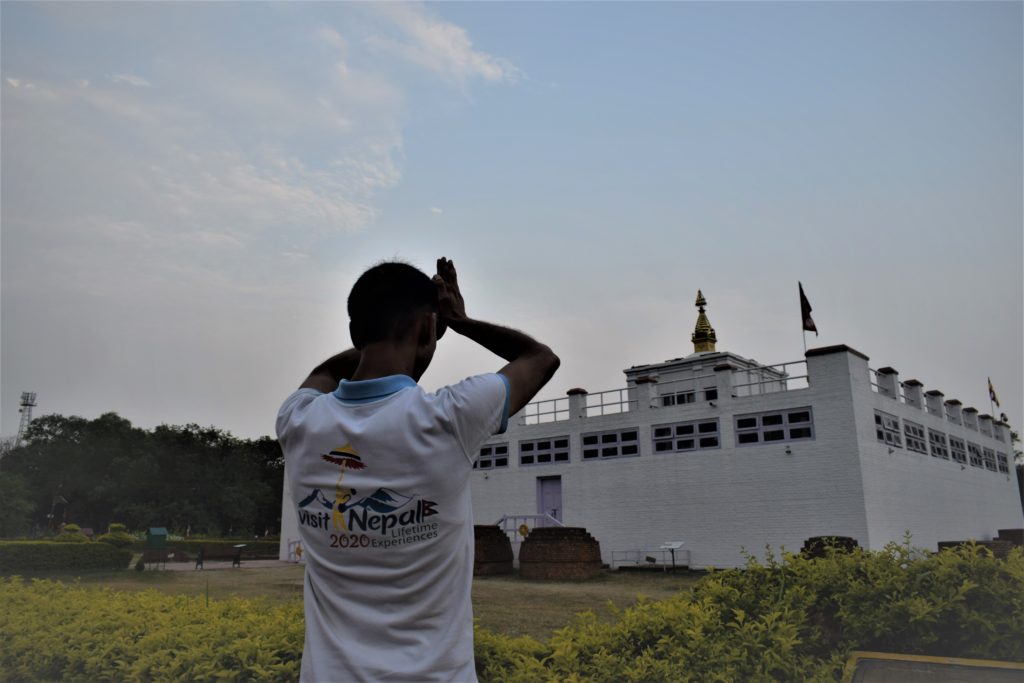
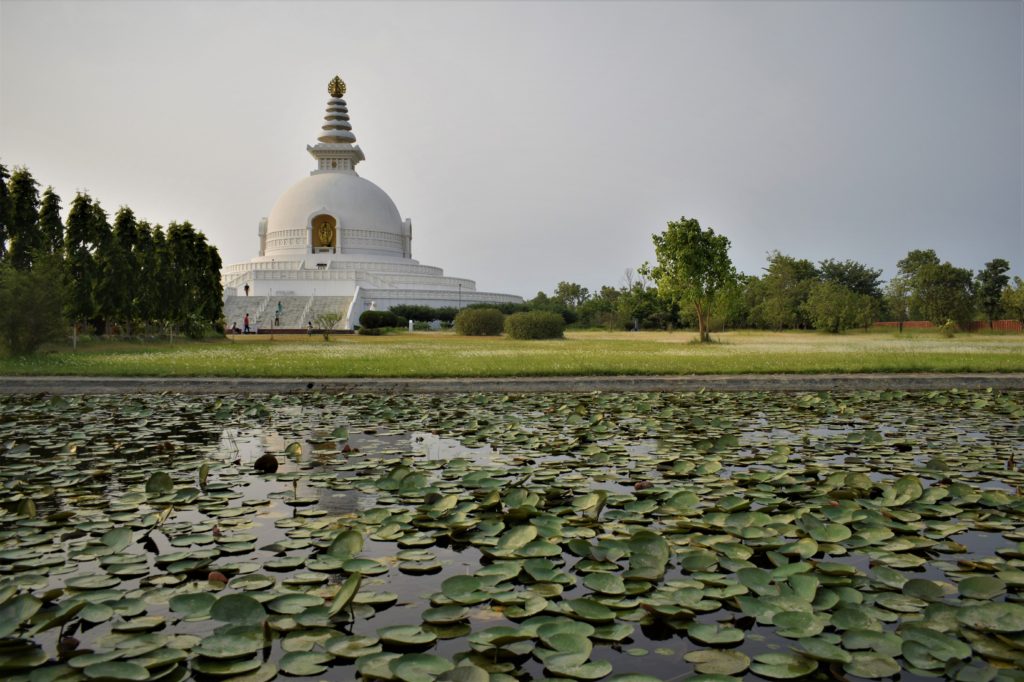
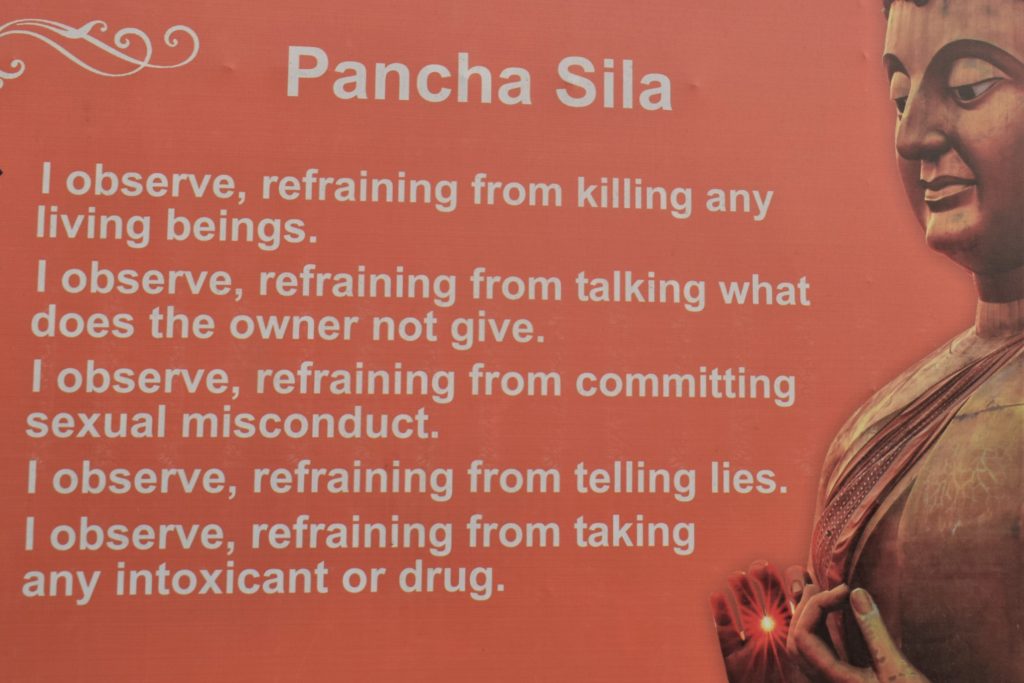





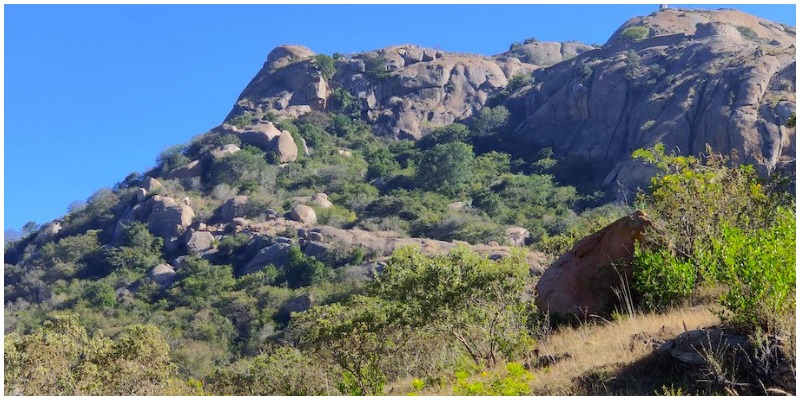
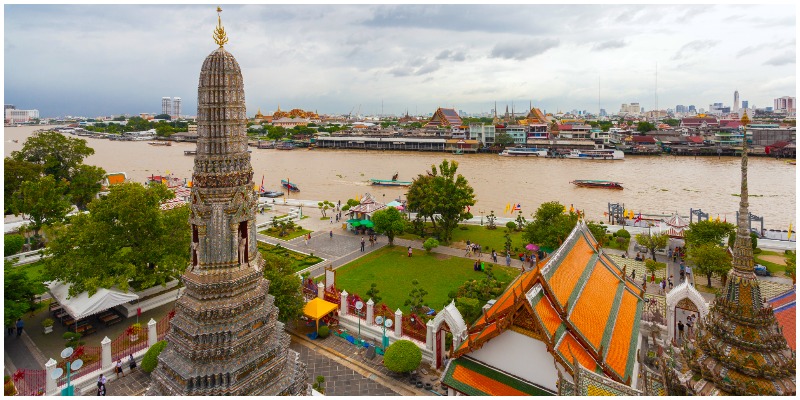
This looks like such a beautiful place! Thanks so much for sharing your adventure – the pictures look amazing!
This is completely new to me, and was a fascinating read. Lumbini definitely is a place of importance, especially for Buddhists to see the birthplace of their god. I love the sound and look of the Peace Pagoda and what it symbolises. I’ve yet to visit Nepal, but visiting this UNESCO site is somewhere I’d love to see one day.
I haven’t heard of Lumbini before. The Nativity Sculpture looks so interesting. Actually, I have a friend who is a buddhist. I will definitely ask more details to her about this. Your photos are so good. I wish I can visit there too and experience of the serenity brought by Lumbini.
Lumbini looks like such a peaceful spot. Always love visiting these places around Asia, so quiet and serene.
While I don’t practice Buddhism, the religion has always interested me. What an incredible experience it must have been to walk where Buddha once stood. The World Peace Pagoda in Lumbini would be particularly lovely to visit.
It would always be a great to see the birth place of Buddha. From childhood I have heard of Lumbini but could not able to go there. Your post has great details about what to do here like Maya devi’s Meditation place. Visiting sacred garden is also another important thing to do here. I would surely go for Lumbini during my Nepal.
I have always been fascinated by Buddhism and the spread of it. A lot of it has been spurred by my repetitive visits to the Southeast Asian nations. Visiting Lumbini is not doubt a pilgrimage for anyone who is interested in Buddhism. And I am quite surprised that there are so many different places connected with Buddha that we can see around Lumbini. I was only aware of Kapilavastu. This has been a very enlightening guide for me.
LUmbini seems to be calm and peaceful place to visit. I have gonna to some Buddhist temple in Dehradun
You are indeed very lucky that you got to visit Lumbini… I have always loved the ideologies of Buddhism and their teachings… I would love to visit the place someday!
wow this place must be so rich of culture , all the pictures are so beautiful .I wish I could visit this place soon.
I have been to this place. I guess i was only in 3rd grade. But remember how peacefully it felt. It was nice learning about Buddha’s birth in the article.
Absolutely bookmark worthy post. The information is so detailed and so are the pics. Lumbini looks so calm and serene and I must visit it.
I love how wonderful you describe your tour to the birth place of the Buddha. Bookmarking this page right away!
What an absolutely delightful post and trip! You had me wishing that I too had been with you on this trip – what beautiful photographs and your description makes me want to embrace this experience of serene peaceful surroundings. Definitely adding this place to my wish list – I had not even known about it – so what a wonderful discovery by coming to your blog today 🙂
That’s a detailed post on Lumbini garden. I want to visit it now after reading your post. This is a very good post and thanks for the virtual trip.
Thanks for sharing the tour. It is quite detailed and I really love the pictures. The place looks so beautiful. I would love to visit there once
This was a very interesting read for someone who doesn’t know too much about Buddhism. It sounds like it was a very invigorating experience for you. The whole area looks beautiful and calming as well. I havent’ been to Nepal yet but I would definitely love to one day.
I only passed by Lumbini. The initial plan for to take a diversion to it but owing to the state of roads, we got delayed and had to give it a miss. And what a miss it has been. I can feel the peaceful vibes right through the article. The Mayadevi Temple was high on my list for its significance but now for other reasons too. Incidentally, the inscription on the pillars – Öm Mane Padma….”is the same as what is on various Buddhist prayer stones – the ones we saw in Ladakh too 😀
It was very interesting, i enjoyed learning about Buddha, thank you. Now i really want to go there and see it for myself